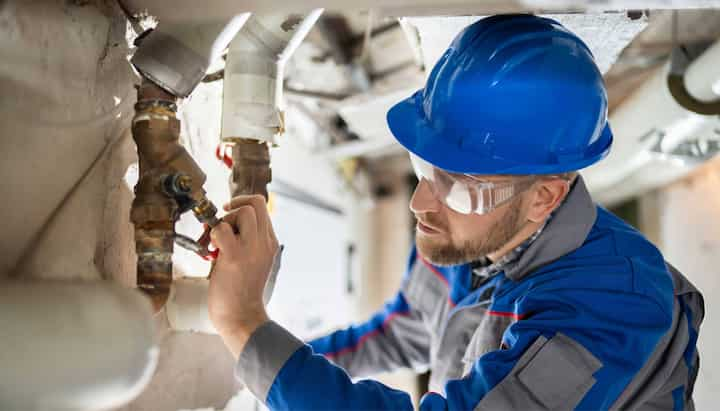
Top Water Damage Prevention Tips
Water damage can be costly and destructive. Its effects can range from minor staining to major structural damage, making it imperative to prevent water damage to the home. The first step in water damage prevention is to identify potential sources of moisture and repair any existing leaks or problems. It is also critical to inspect roofs and gutters for holes or clogs that could lead to a backup or overflow. Finally, regular maintenance is essential to prevent water entry. By following these simple tips, homeowners can protect their homes from costly water damage and enjoy peace of mind knowing their property is safe and secure.
Water damage prevention starts with understanding the causes
Understanding water damage causes can help prevent it and minimize potential losses. One of the most common causes of water damage is plumbing issues. Leaky pipes, faulty fixtures, broken appliances, and clogged drains can all lead to water pooling in areas where it shouldn’t be. Another common cause of water damage is inclement weather. Heavy rains, strong winds, and floods can all cause significant flooding in homes and businesses. Taking preventative steps such as installing waterproofing systems or keeping gutters clear can mitigate these risks. This will reduce the chances of experiencing considerable water damage due to severe weather conditions.
Preparing for water damage emergencies
Knowing what to do ahead of time can help minimize damage and ensure that you take the proper water damage prevention steps to protect your property. First, create a response plan for an emergency. Additionally, it is helpful to know who to contact in case of an emergency such as a plumber or a restoration company. Lastly, make sure all household members are aware of safety precautions when dealing with water emergencies. Ensure everyone is aware of where each shutoff valve is located. They also know how to turn off all electricity when standing underwater, and where personal items should be stored in case of flooding. Taking these precautions will help you stay safe during a water emergency and lessen the impact of flooding on your property.
Detection and repair of leaks
In the face of a water emergency, water damage prevention is always the best approach. As such, it is imperative to know how to detect and repair leaks to prevent further damage. Unusual sounds coming from the walls or ceilings, dampness or standing water on floors or carpets, and visible damage such as stained walls or peeling paint should all be taken seriously. For repairing leaks, shut off the water source before making repairs. Once done, locate the affected area and make sure it is properly dried out before beginning repairs. Proper detection and repair of leaks can minimize water damage caused by emergencies such as floods or storms. Paying attention to details such as unusual sounds or smells can come a long way in identifying potential problems early on. Taking these steps will help ensure that future water damage are prevented due to preventative measures.
Water damage prevention requires proper maintenance
Water damage prevention starts with maintaining the plumbing system. This is done through regular inspections of pipes and appliances to ensure they are in proper working condition. The first step in properly maintaining pipes and appliances is to inspect them regularly. In addition, it is worthwhile to check for any loose or disconnected fittings or connections that could lead to a water leak. Finally, it is imperative to keep an eye out for any changes in water pressure or temperature that could indicate a problem with the plumbing system. If you notice anything unusual, it is advisable to contact a professional who can help identify and repair the issue before it results in costly water damage repairs down the road.
Practice regular inspections
Regular inspections are important for water damage prevention. When inspecting a home or building, it is critical to look for signs of water leakage and saturation in the walls and ceilings. Visual inspection also includes looking for standing water or moisture in basements, crawl spaces, and attics. Small problems should be identified and addressed as soon as possible to avoid major damage later on. In addition to visual inspection, other methods can be used such as infrared thermography. This detects high-humidity areas not be visible to the naked eye. Moisture meters can also be used to measure moisture in wood or other materials exposed to water. Taking preventative steps like these can save money by preventing more expensive repairs down the road.
Consider Belknap County Restoration for water damage prevention
One of the most effective ways to prevent water damage is to properly maintain pipes and appliances. Regular inspections are also important for reducing water damage risk. Additionally, inspect all exposed pipes for visible signs of corrosion or wear regularly. By taking these preventative measures, you can significantly reduce the chances of costly repairs due to water damage to your home. With proper maintenance and regular inspections, you can save time and money while protecting your property from costly repairs caused by excess moisture buildup or flooding incidents. With this knowledge in hand, you’ll be better prepared to protect your home against water damage issues. Contact Belknap County Restoration for your water damage repair services!